
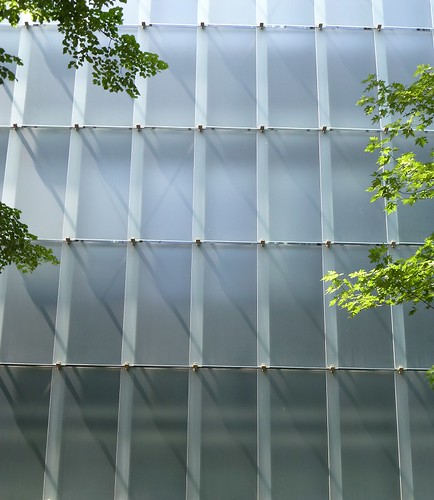
And that was the least of it. There was also this amazing ticket hall for the local ferry company (I particularly like how the white triangles painted on the glass look like sailing boats on the lake):
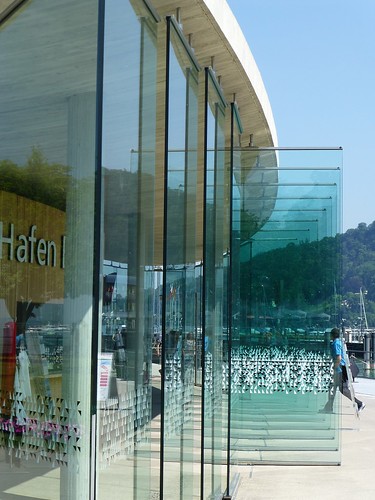
And the Festpielhaus where the annual opera on the lake is based is quite a striking building too. What I found particularly striking about these buildings was of course the stunning modern design, but mostly how, although they are striking and imposing, they are excessive and try to obliterate the rest of the urban form. They are just there as natural a part of the city as a medieval tenement block or a baroque chapel.
Now this modern design was not limited to Bregenz - we were staying in the rural hinterland, the Bregnezerwald - and every single little town or village had a substantial number of beautiful modern houses that just fitted in seamlessly to the countryside (just about).
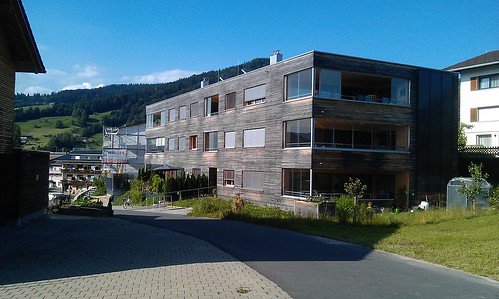
Thanks to our very nice hotel we discovered part of the possible reason why there is all this beautiful modern design. The hotel had a fascinating history, but the essential part here is that each generation of the family who took it over did a massive refurbishment of it. The most recent was carried out by an amazing craft workers cooperative, the Werkraum Bregenzerwald. This is a collective of over 80 local crafts people who are just committed to Good Things: using local materials; keeping traditional crafts alive; training apprentices; and very good design. The hotel manager had basically employed the whole collective to refurbish the hotel and it was truly, heart-achingly beautiful, simple modern design. Basically the whole setup seems like a very good model for sustainable economic growth in a rural area - high value-added and local.
When we visited the Kuntshaus in Bregenz there just happened to be an exhibition of Peter Zumthor's architectural models, one of which happened to be of the Werkraum's showroom and work space in a wee town called Andelsbuch. Using the effortlessly well-timetabled and cheap Austrian buses, we got there on our last day. It was an amazing building:
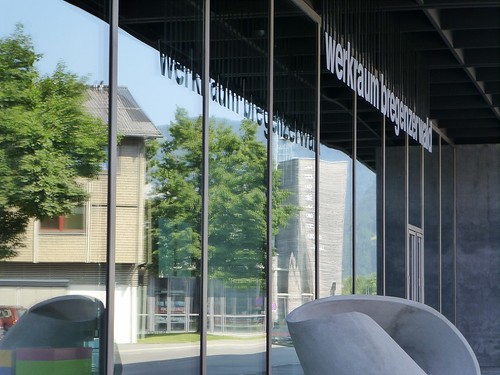
Yet again though, in this wee town the fire station looked like this (note the green roof):
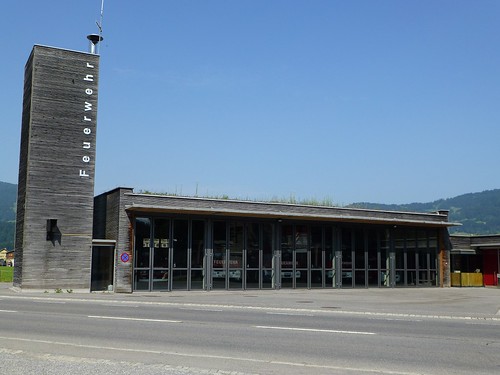
The town hall in a village that could not be bigger than somewhere like Callander, looked like this:
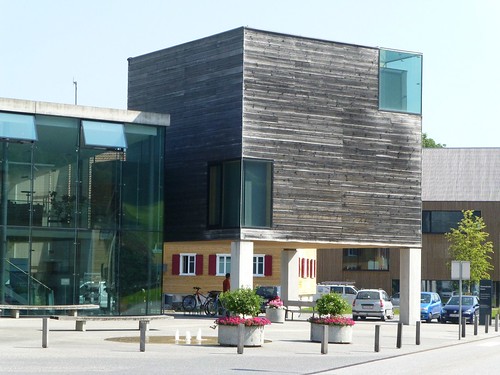
And even the bus stops are fantastically designed (although still replete with graffiti and vomit from the previous evening):

As a planner, the most depressing part of all this for reflecting on how badly we do things in the UK was when our bus back from Bregenz stopped outside a new development under construction:

This is mass-market rural housing, Austrian style. Note the striking modern design; the images of children and older people (not a smiling family in a car); if you zoom in on the image you can see the even more striking thing. These homes are built to Passivhaus standard, with photo-voltaics and batteries for energy storage. If only Barratt and Belway could build stuff like this in Edinburgh.
But, there's always a but. One thing did concern me. Most of this development did seem to be very new indeed. In fact much of it was just finished or barely complete. Reflecting this I pondered something a Dutch researcher explained to me about the Dutch economy. Basically the Netherlands has an almighty housing equity bubble that's on the very edge of bursting. There are many reasons for this, but one of them, it was explained to me, was that the Dutch joined the Euro with a relatively devalued currency (Guilder) compared to the Deutschmark (everything was given the strength of the German economy). This meant the Dutch economy looked artificially more productive than it actually is and this has produced a post-Euro boom in the economy. This has continued as the economy looks very productive compared to the peripheral Euro economies. I'm happy to be proved wrong on this, but this is my recollection of a conversation helped by some nice Dutch beer and bar snacks. Anyway, I was worried about whether the same is true in Austria and the economy is still artificially inflated and there's a property boom waiting to burst. To be sure, there was much more new, private, development in Austria than Germany. Can anyone else enlighten me?
Anyway, if you want to see more photos of the striking modern design, I've put them all into one set on Flickr.
